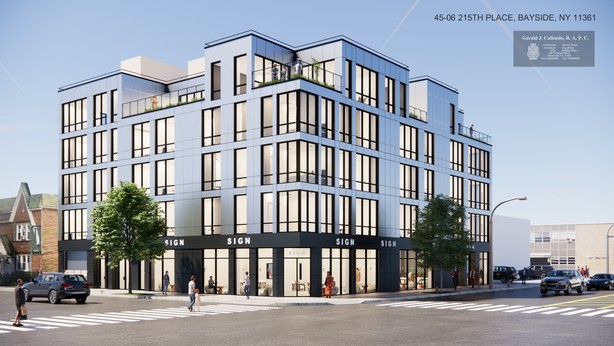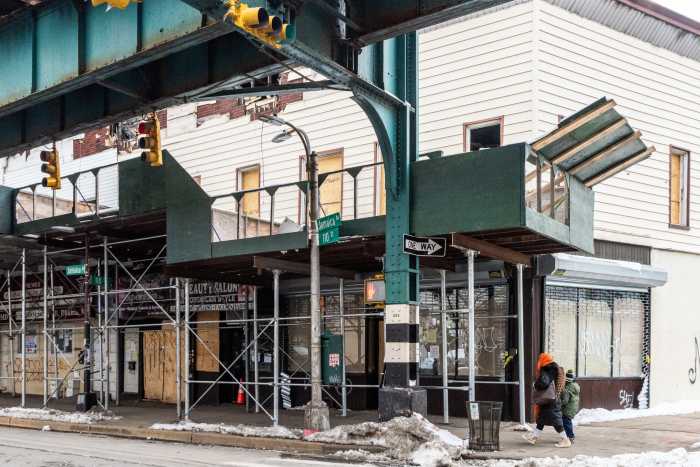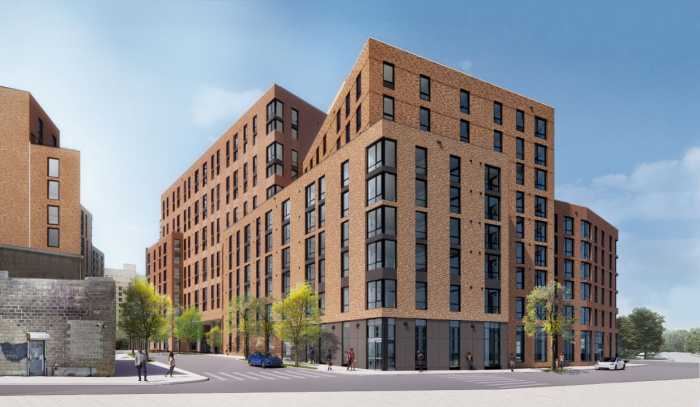By Sarina Trangle
For months, Voncille Chaney drove past a two-story house on 220th Place, scouring for clues about how the dilapidated structure would look when Habitat for Humanity finished.
Chaney, a city Department of Education employee, seemed at ease when she received the keys to a refurbished, sand-colored home Saturday.
But her 11-year-old son Ahmai busied himself inspecting the Laurelton property, asking to try out a hose in the backyard, peeking into the oven and inquiring about how kitchen appliances worked.
“He’s excited. He wants to play in everything,” Chaney said of her son, who she forbad from hanging out outside of their former East New York home. “It’s dangerous and my son couldn’t go outside to play.”
Dozens of volunteers with Habitat for Humanity NYC, an affiliate of the national organization dedicated to constructing affordable homes for families in need, Wells Fargo, Dabar Bethlehem Cathedral parishioners and neighbors welcomed the Chaney family to the two-bedroom at 137-35 220th Place.
Neil Hetherington, CEO of the city Habitat chapter, said the organization bought about a dozen homes in southern Queens for $1 from the New York City Housing Authority and was negotiating the purchase of about 30 others clustered in southern Queens and Brooklyn.
The homes, once in a federal housing program and then rented out by NYCHA, had been foreclosed on about 15 years ago when NYCHA deemed them too expensive to operate.
“The young lady over on the step, the neighbor, she’s been complaining about this house for a long time,” said City Councilman Donovan Richards (D-Far Rockaway). “When homes go into foreclosure… it depreciates the community in a sense. So when you do something like this, you’re creating a better qualify of life.”
Habitat for Humanity was able to secure the properties at a steep discount because it reserves them for affordable housing by ensuring all homeowners earn no more than 120 percent of the area median income, according to Hetherington. They must also have enough income to afford the homes and demonstrate a need for assistance.
“Then you get to the pivotal moment of a family’s life,” he said. “This is the moment when Voncille and her son broke the cycle of poverty by building up an asset.”
Chaney said she decided to apply for assistance from Habitat NYC after learning the organization was repairing houses near her childhood home of Hollis.
Last July, she received an email informing her she was accepted into a homeownership program and that she would need to complete 200 hours of “sweat equity” by helping the Habitat volunteers that do interior construction once professionals repair the exterior shells of homes.
Since then, Chaney said she frequently cruised along 220th Place to gauge the progress.
“I’ve been doing drive-bys,” she said, describing its transition from an eyesore to a pristine property. “It was always my dream to move back to a home in Queens and I didn’t think I could do it, but with the help of Habitat for Humanity, we’re here.”
Reach reporter Sarina Trangle at 718-260-4546 or by e-mail at strangle@cnglocal.com.



































